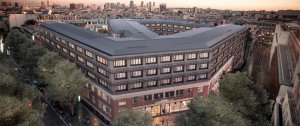Role of sleep in memory processes
The two-stage model of memory consolidation developed by Gyorgy Buzsaki proposed that encoding occurs during awake hippocampal theta oscillations (5-10Hz) and consolidation during slow wave sleep (SWS), involving reactivations that occur during hippocampal 200Hz oscillations called the sharp-waves-ripples complexes (SPW-Rs), allowing the transfer of information from Hpc to the neocortex. Several observations support this hypothesis. The activity of hippocampal pyramidal neurons (also called place cells) is known to strongly correlate to the animal position in the environment and the sequence of place cells activated during waking experience is replayed during ripples occurring during subsequent sleep, suggesting that a consolidation of the spatial memory trace could occur during sleep.
In this presentation I will present our study that showed the first causal relationship between memory consolidation and sharp waves-ripples. By using closed loop between neuronal activity and stimulation (classically used in brain machine interface), we showed that selective ripples suppression during sleep following a spatial task impaired learning (Girardeau*, Benchenane* et al., Nat Neurosci 2009, *co-authorship).
Then I will show that it is possible to create an artificial memory trace during sleep by using a brain-computer interface that will automatically trigger reward stimulations by the detection in real-time of spikes of a given place cell. Preliminary data shows that mice go inside the related place field after waking up, showing that a place/reward association has been created during sleep. This results also provides the first demonstration of a causal role of place cells on the mental representation of space and that spikes of hippocampal neurons still convey the same spatial information during sleep and wake periods.








